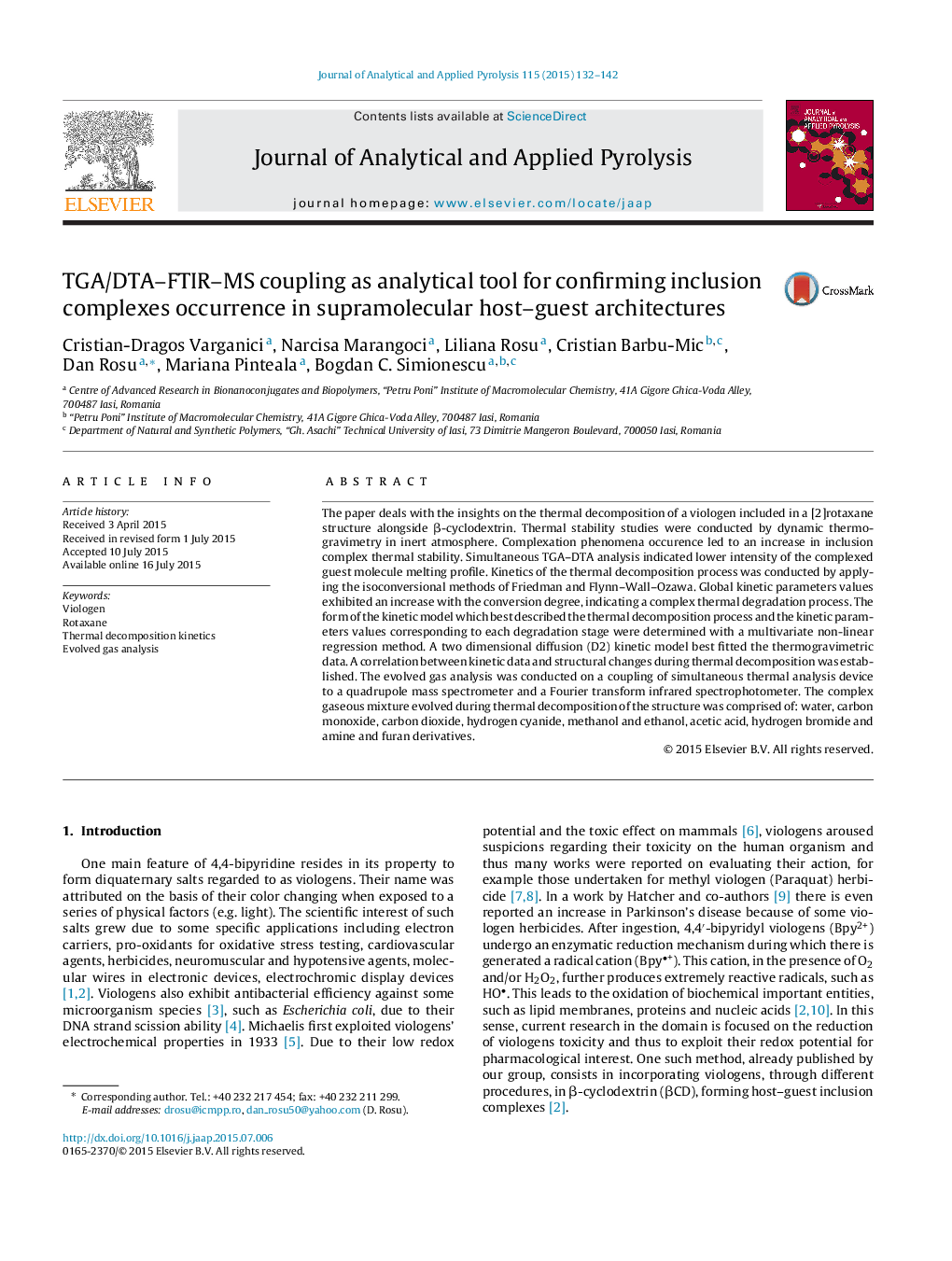| کد مقاله | کد نشریه | سال انتشار | مقاله انگلیسی | نسخه تمام متن |
|---|---|---|---|---|
| 1197086 | 1492962 | 2015 | 11 صفحه PDF | دانلود رایگان |

• Thermal behavior of a supramolecular architecture was studied.
• Kinetic investigations were undertaken by applying two isoconversional methods.
• A TGA/DTA–FTIR–MS coupling was used for the evolved gas analysis.
The paper deals with the insights on the thermal decomposition of a viologen included in a [2]rotaxane structure alongside β-cyclodextrin. Thermal stability studies were conducted by dynamic thermogravimetry in inert atmosphere. Complexation phenomena occurence led to an increase in inclusion complex thermal stability. Simultaneous TGA–DTA analysis indicated lower intensity of the complexed guest molecule melting profile. Kinetics of the thermal decomposition process was conducted by applying the isoconversional methods of Friedman and Flynn–Wall–Ozawa. Global kinetic parameters values exhibited an increase with the conversion degree, indicating a complex thermal degradation process. The form of the kinetic model which best described the thermal decomposition process and the kinetic parameters values corresponding to each degradation stage were determined with a multivariate non-linear regression method. A two dimensional diffusion (D2) kinetic model best fitted the thermogravimetric data. A correlation between kinetic data and structural changes during thermal decomposition was established. The evolved gas analysis was conducted on a coupling of simultaneous thermal analysis device to a quadrupole mass spectrometer and a Fourier transform infrared spectrophotometer. The complex gaseous mixture evolved during thermal decomposition of the structure was comprised of: water, carbon monoxide, carbon dioxide, hydrogen cyanide, methanol and ethanol, acetic acid, hydrogen bromide and amine and furan derivatives.
Journal: Journal of Analytical and Applied Pyrolysis - Volume 115, September 2015, Pages 132–142